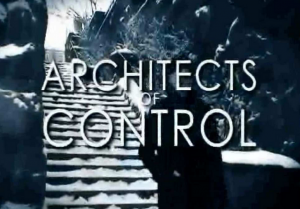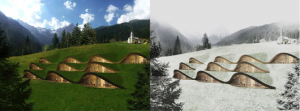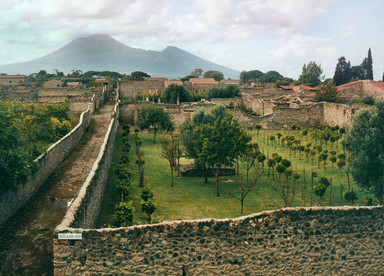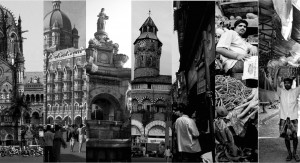Atmosphere is an ambiguous word subject to many interpretations within the realm of architecture. From a scientific perspective, atmosphere starts where construction stops, wrapping around or within a building, independent from the building itself. One could argue that control on such atmosphere is impossible to attain. On the other hand, one could debate that architecture does produce an atmosphere with its physical form, details and use of materials, through an array of intangible generated effects such as light, sound, smell and heat. When walking around or into a building, one is experiencing it’s atmosphere not the object as such. Within his text named “Architecture of Atmosphere”, Wigley debates the notions raised above, highlighting differences between architects who put atmosphere as the centre of their thinking, whilst others who marginalise it. Finally, I question if architects should be obsessed with such control over atmosphere.
Architects of Control
NEED FOR ARCHITECTURE ?
In this text, the author is trying to analyse and conceive on the different habitats of Saint Jerome and is based on a series of paintings belonging to the renaissance period.
Saint Jerome habitats depict three allegorical capabilities which are-
The desert, The study, and The Grotto.
First being ‘The Desert’ in which the ideal habitat has been depicted where man has no support from sands/rocks. Man is relieved of responsibility and commits himself to a lone retreat by going to ‘Chalcian Desert’: “The Wilderness”.
The desert symbolises the nature – the wild. During that time he became one with the nature, he embraced it.
Second habitat ‘The Study’ man is no longer exposed but inside protected. There is a calmness depicted which indicates the World being at peace. In this habitat there is a desire for built order supported by civilized services.
In the paintings he is depicted in a cave with many books. After the desert, Jerome wanted to become part of a community as well as enjoy a closed environment without being exposed to weather phenomena – man-made. In the paintings he is depicted in a cave with many books. After the desert, Jerome wanted to become part of a community as well as enjoy a closed environment without being exposed to weather phenomena – man-made.
Third habitat ‘The Grotto’ is the combination of the above two extreme that is the ‘Idyll Nature’ and ‘Idyll Thoughts’. The grotto symbolises both the wild and the man made. It is the idyll environment to live. There is visual connectivity to the city at a distance and yet trying to maintain the peace and freshness of the nature by making the cave s his habitat. In the depiction he has bought his study to the cave, trying to strike the right balance between the two habitats.
In my opinion we might be able to create the ideal living condition which will benefit man and nature.
In conclusion, How architecture interacts with natural environment?
How does Architecture play a role in the human existence?
@mosphere in Architecture
Atmosphere to me a personal phenomenon.its a personal definition, a perspective,an affection ,
a feel ,a interpretation of a transition may be because of the space , an activity ,
a strong connection between static element ie the space and kinetic element ie the
people. Atmosphere defines the space between building and its context or rather defines the space.
their is always an interrelation of the two forming a strong connection. Its also an intangible effect
such as sound , light ,smell, object , the activity that apprehend.
As a personal reference were i relate atmosphere can be in a strong urban fabric of Mumbai. Mumbai is a
dynamic city with multi layered information. it has a alchemy of time over space. As we walk around the fort
part of Mumbai were it has been decorated with the British architecture we follow an urban text composed of
the traces left by historical, literary and cinematic walkers. This sensuous act of walking in the city
allows us to apprehend the different tactile, aural, olfactory and visual traces that reveals the city’s hidden
histories and geographies. Each excursion will draw on the city’s rich resources of images, text, and films
to plot an emotive cartography of different urban environments. A walk from the church gate station to the
Crawford market creates a sort of assertion. But this assertion changes as one arrives at the Crawford market
were their is sudden change in ambiance one loses a grip of a controlled atmosphere. Were architecture no longer
the edifice but the activity forms a evident language. Were the people and the activity forms a part of
reference this sort of transition forms a psychic atmosphere. The public domain forms a integral part of the
fabric. The architecture no longer defines the space the space but the activity do.
My research would be relating to these transitional space ,it may be with in the building or may be the change of ambiance within the space of a few meters.




